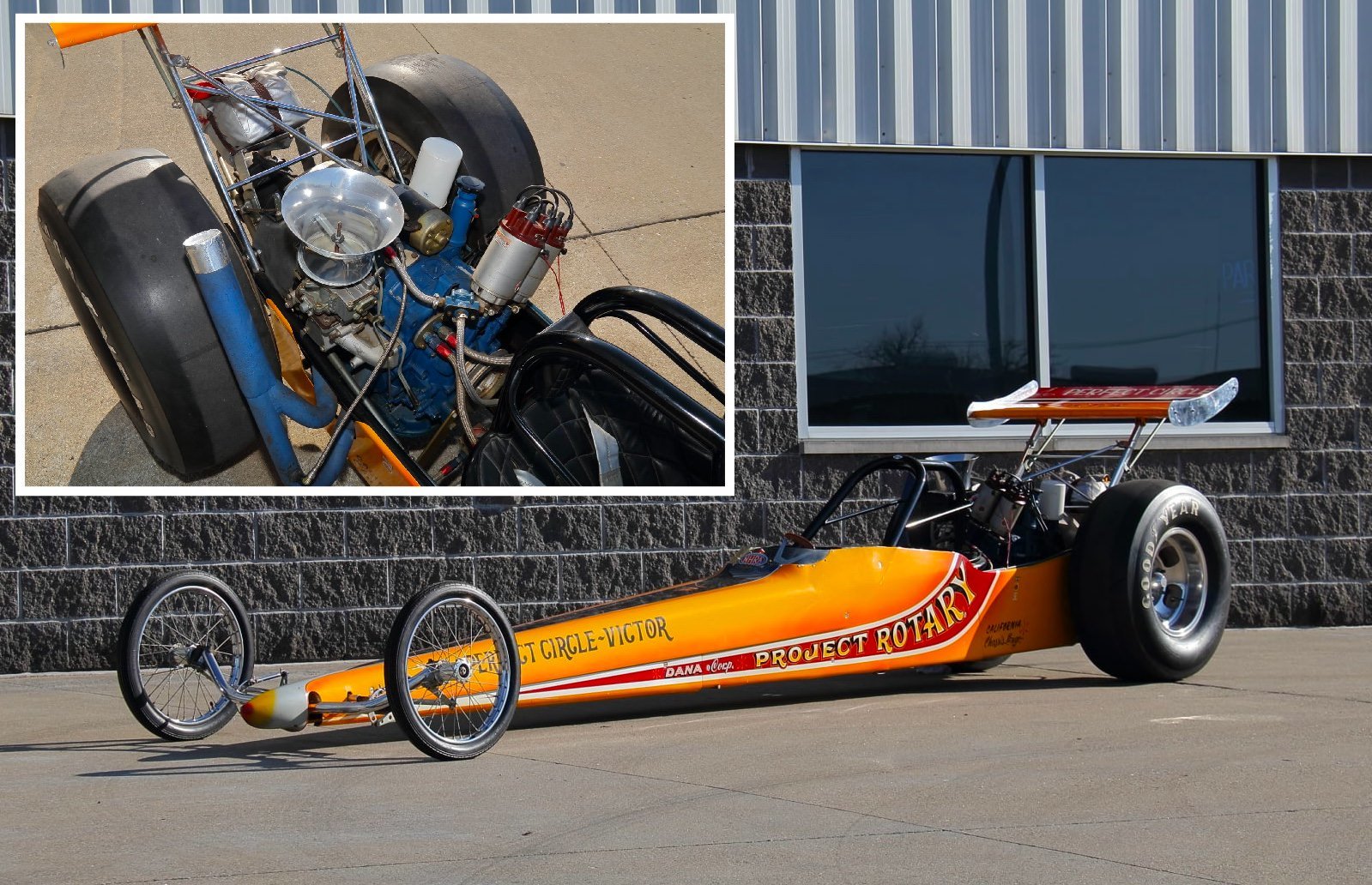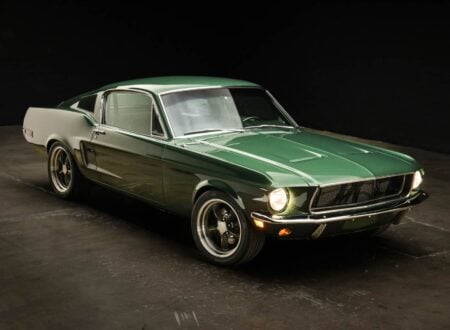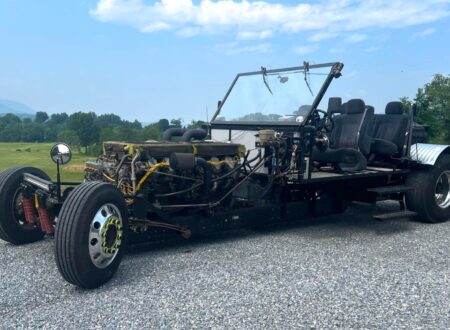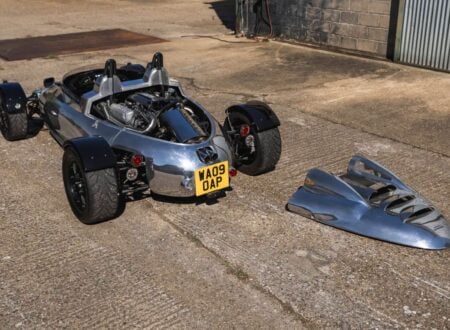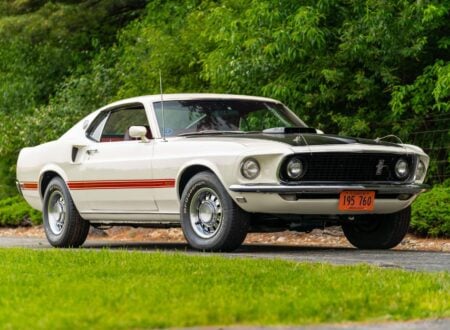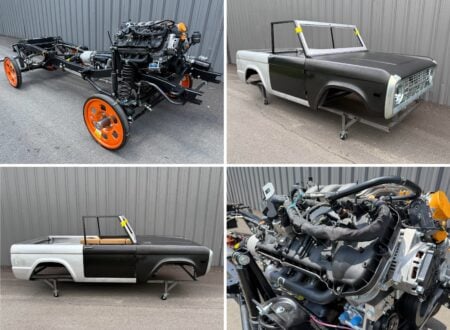This is the only example of a Wankel-rotary-powered dragster that we’ve seen come up for sale in recent memory. It’s powered by a highly-modified Mazda 12A engine, and it was formerly on display at the Indianapolis Motor Speedway Museum.
This dragster was commissioned by Dana Corporation’s Perfect Circle Piston Ring division in 1972 and built by Dave Tuttle’s California Chassis Engineering Co. It was used as a promotional vehicle by Dana, and shown throughout the U.S. in period.
Above Video: This fantastic video from Warped Perception shows you what happens inside a Wankel rotary engine as it’s running, using slow-motion videography and a clear engine casing.
The Mazda 12A Wankel Rotary Engine
German engineer Felix Wankel developed the Wankel rotary engine in the 1950s. The engines were revolutionary in their time, as they were exceedingly small and lightweight, they had very few moving parts, and they were remarkably simple.
A number of rotary-engined cars were developed, as well as motorcycles, and the engines have even been used in light aircraft. Perhaps the one automaker that is most closely associated with Wankel engines is Mazda, who has been experimenting with (and improving on) the design since the early 1960s.
Although it’s arguable, the two most famous Wankels built by Mazda are likely the 12A and the 13B. The 12A was an elongated version of the earlier 10A with two rotors and a total displacement of 1,146cc.
The Mazda 12A remained in production for a remarkable 15 years from 1970 until 1985, and historically it would become the first engine designed and built outside of Europe or the USA to finish the 24 Hours of Le Mans.
Aftermarket performance parts and tuning garages soon sprang up around the world to make these rotary-powered Mazdas even faster, many would be raced with great success, and forced induction (typically via turbocharging) would see engine outputs skyrocket.
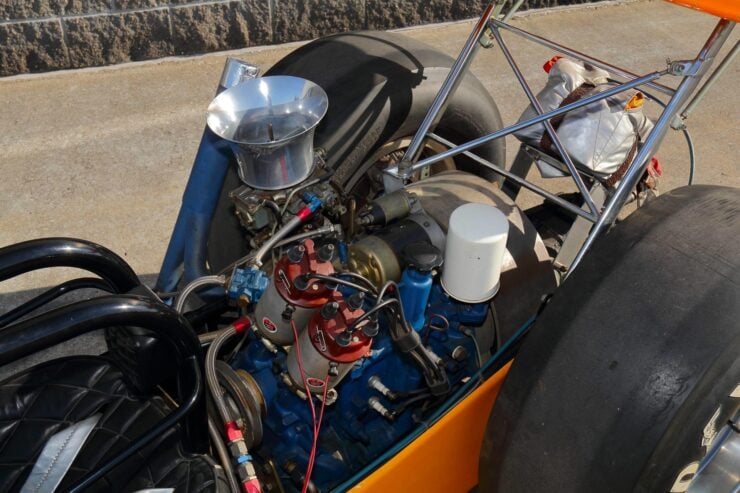

Sadly, issues with apex seals, fuel economy, and emissions, would see Wankel rotaries disappear from production vehicles a few years ago. There are still teams working on new versions of Felix Wankel’s concept to address these issues, but as of yet, none have ended up on showroom floors.
The Rotary-Powered 1972 Dragster Shown Here
The vehicle you see here is the 1972 Perfect Circle Project Rotary Dragster. It has a tubular steel chassis, aluminum bodywork, a large adjustable rear wing, a roll cage, and rack-and-pinion steering provided by P&S. It has 15×8.5 inch Filter Dynamics slotted wheels and Goodyear Blue Streak Dragway Special slicks in the rear, with Inoue 2.25-17 inch bias-ply tires up front.
In the cockpit you’ll find a black quilted vinyl racing seat upholstered by drag racer Tony Nancy, a 5-point harness, a steering yoke, toggle switches, and an oil pressure gauge. It’s powered by a modified Mazda 12A rotary engine with a displacement of 1.1 liters or 70 cubic inches.
The engine is fitted with a large intake trumpet (the biggest we’ve ever seen), dual ignition coils, a Nikki carburetor, custom exhaust headers, and power is sent to the rear wheels through a Volkswagen T2 4-speed manual transmission.
The dragster has a rear parachute and Hurst-Airheart rear disc brakes, and it was built by Dave Tuttle’s California Chassis Engineering Co. of Chatsworth, California for Dana Corporation’s Perfect Circle Piston Ring division in 1972.
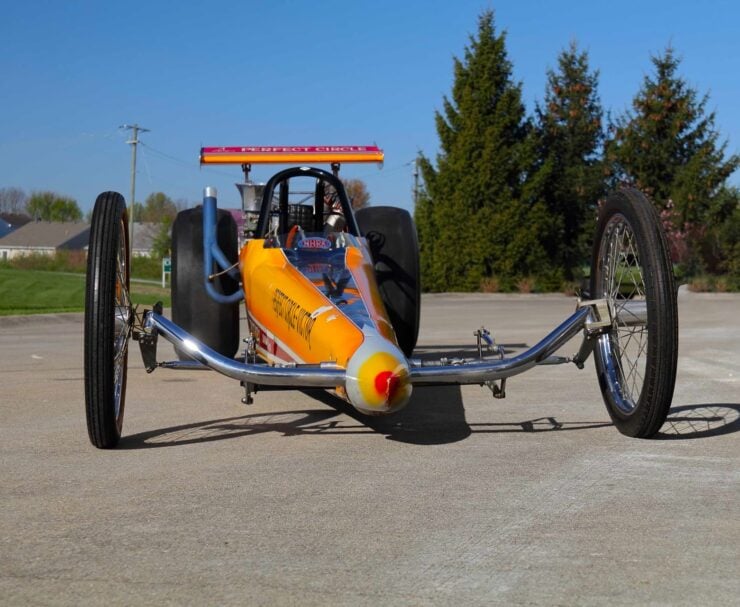

As mentioned higher up, it was used as a promotional vehicle by Dana and shown throughout the USA before being donated to the Indianapolis Motor Speedway Foundation in May 1975 where it was on display for many years.
It’s now being offered for sale by Mecum in mid-May at their Indy Auction. If you’d like to read more about it or register to bid you can visit the listing here.

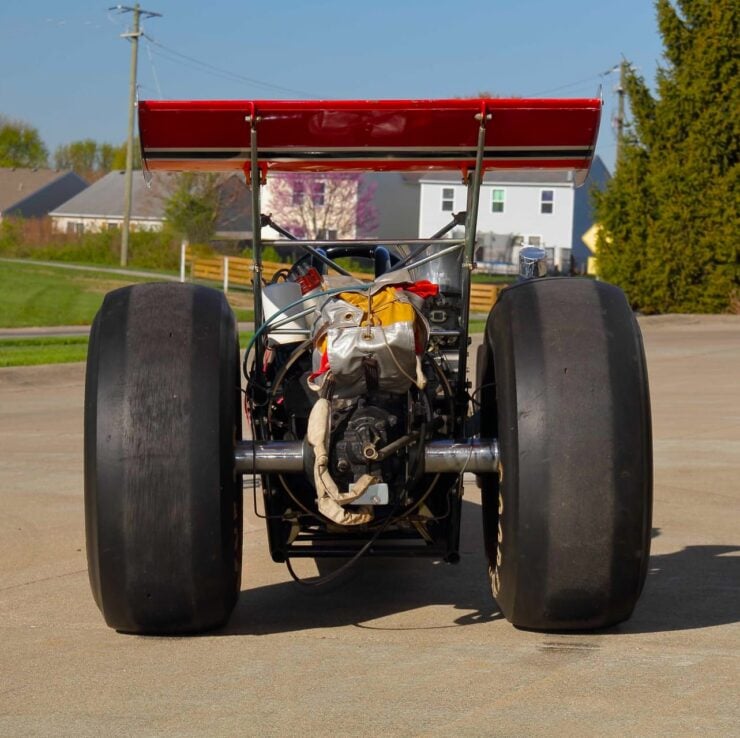
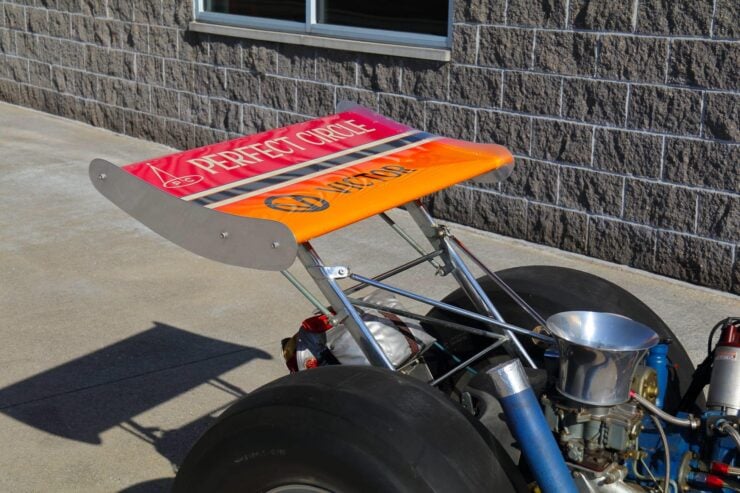
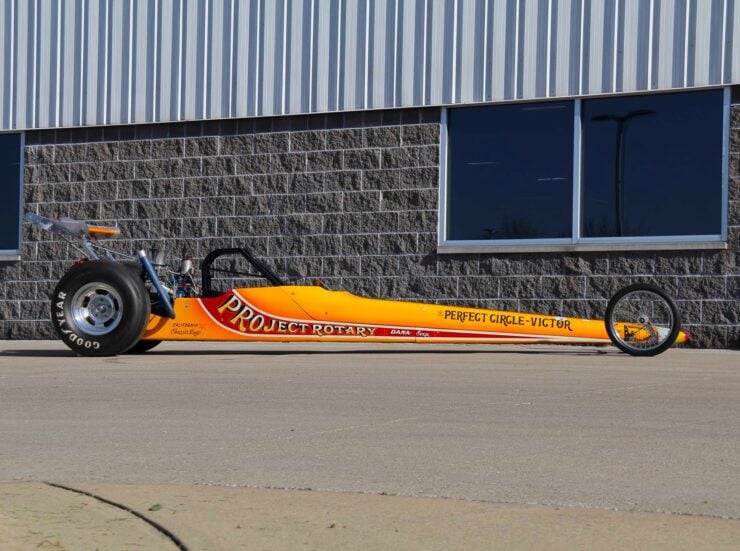
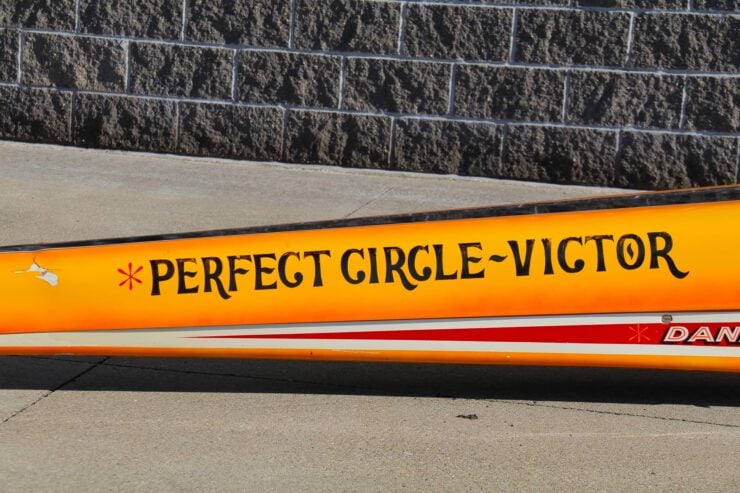

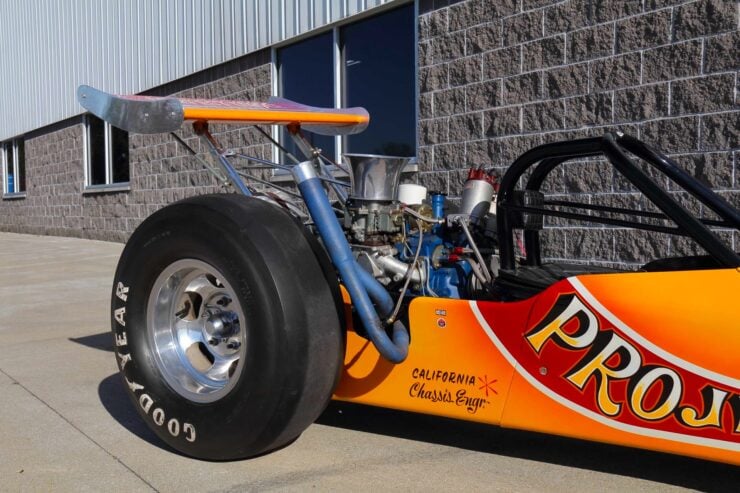
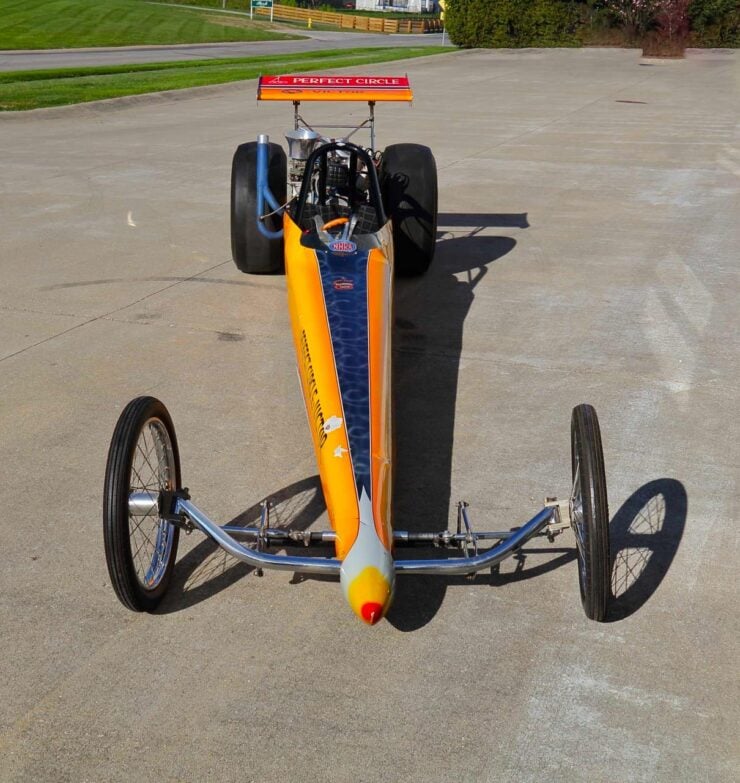
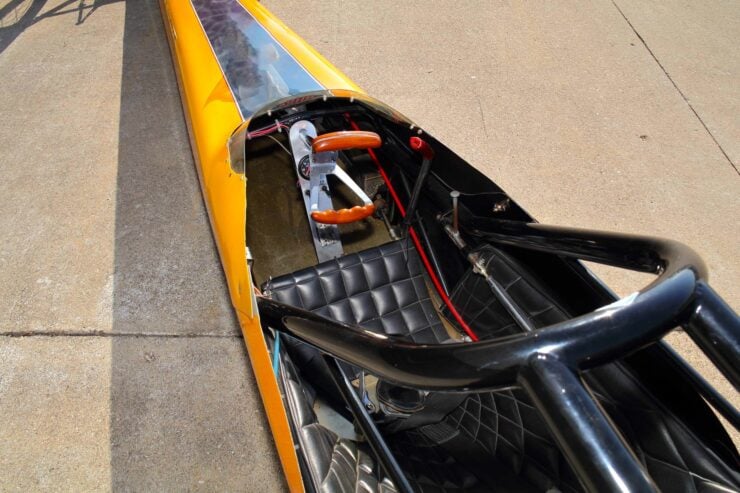
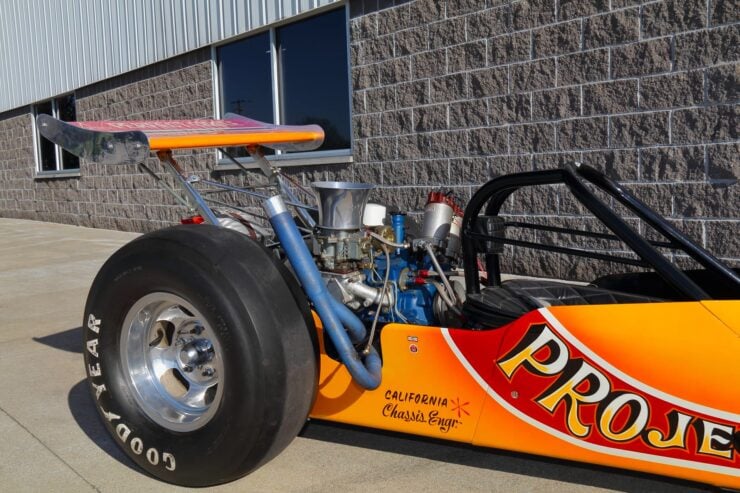
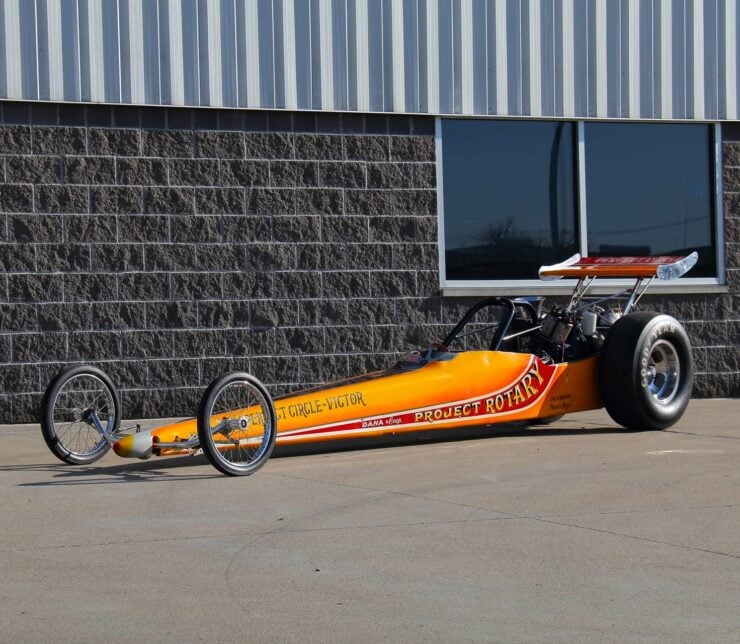
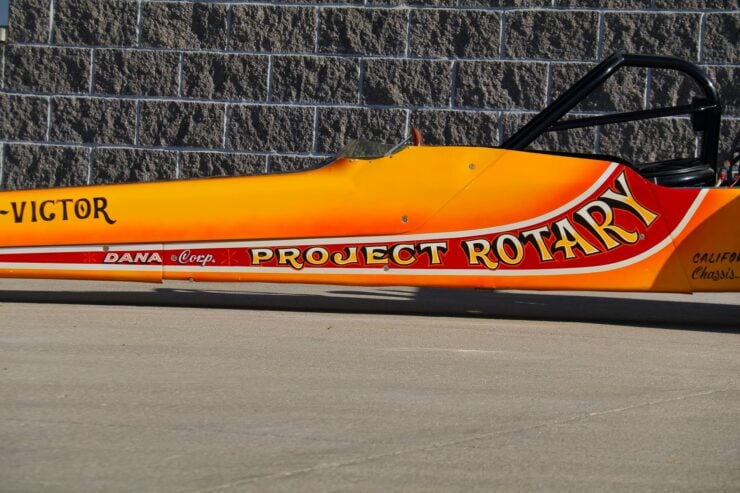
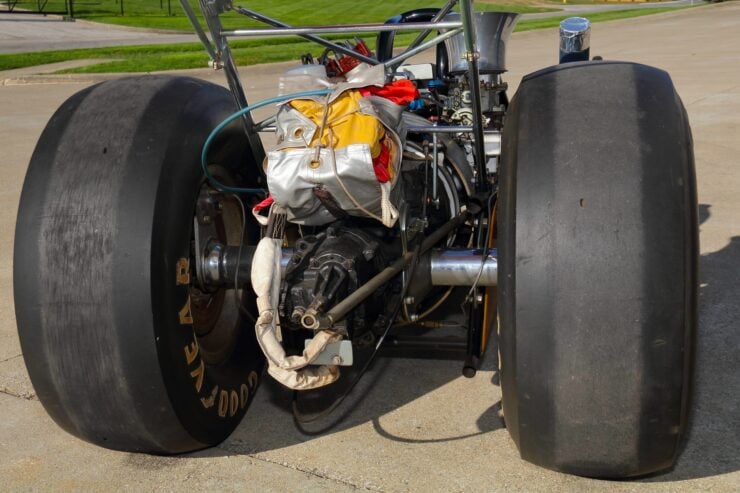
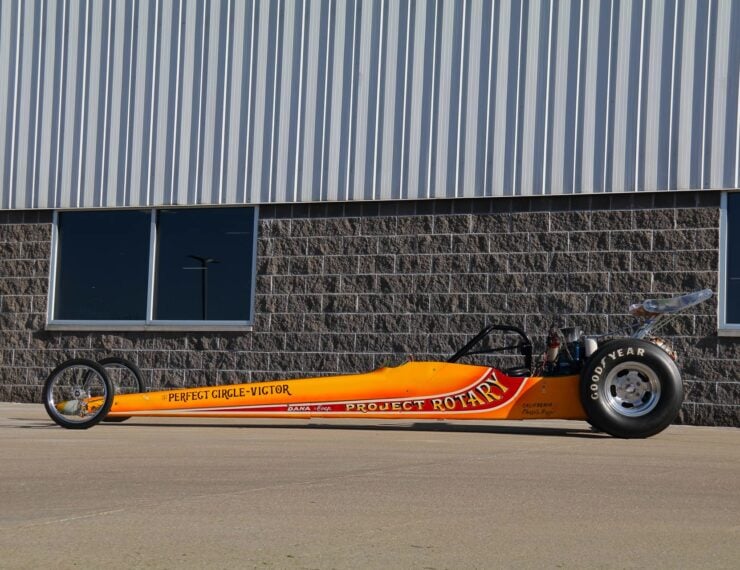
Images courtesy of Mecum

